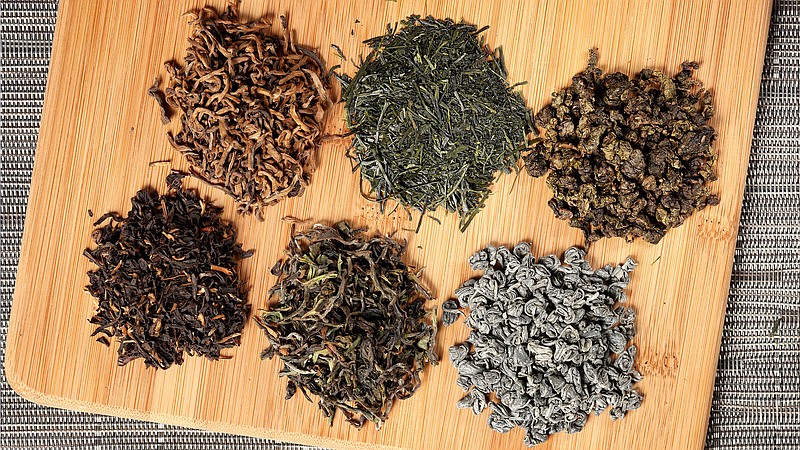With cooler weather coming, warmer beverages sound better every day. Still, you can drink only so much coffee, and some of us are perhaps already a little, um, over-caffeinated. Maybe it's time to consider a cup of tea, the world's second-most-popular beverage (after water), according to the Tea Association of the U.S.A., with about one-third of coffee's caffeine.
With hundreds of teas out there, you might reasonably conclude that they must come from many different plants. Fact is, all tea actually comes from one plant: Camellia sinensis, a species of evergreen that grows worldwide in warmer climates. Tea's wonderful variety results from the terroir-where the plant grows-and the way the leaves are processed. All tea leaves start out green and become darker as they oxidize, a process that brings out and concentrates flavors.
Here are six classics to check out:
Assam. If you're transitioning to drinking less coffee and more tea, Assam is a good gateway beverage that's hearty and deep-flavored. Named after its home region in northeastern India, this malty brew is used in Irish and German breakfast teas, an indication of its potential, like coffee, to stimulate.
Pu-erh. A reddish-black Chinese tea from Yunnan province, pu-erh is aged, hardening as it dries, then pressed into regular shapes for shipping. Like wine, pu-erh improves with age. You'll sometimes see vintages on the packaging, and because pu-erh's so dry, you can hold it for a little longer than most teas, and it may even continue to improve with age.
Darjeeling. A product of West Bengal, India, darjeeling is usually a black tea, but when the leaves are very young, they can be used to make a white tea, which is much lighter in taste. Compared with Assam and pu-erh, Darjeeling tea leaves yield a lighter liquor, with a flowery nose and slight astringency.
Sencha. A rich, fresh-tasting green tea from Japan with low astringency, sencha, as with most green teas, can be re-infused two or more times. Aficionados appreciate the changes the tea goes through after each successive infusion.
Gunpowder. Several types of tea may be called "gunpowder," which refers to the tight balls into which the tea is sometimes rolled to preserve the fresh taste of the tender leaves. This is rare green tea, sometimes with a grayish cast and an almost sweet aroma and taste.
Oolong. Kind of a cross between green and black tea, oolong leaves are more oxidized than green, less oxidized than black, which means it's somewhat stronger and more astringent than green tea but less strong and astringent than black tea. If you usually prefer black tea, oolong is a fine place to start experiencing what green tea offers.
Some good teas come in bags, and we've liked Rishi and Mighty Leaf, both available at Whole Foods. We prefer to shop for whole leaf tea at smaller tea shops, where you can discuss personal preferences with the tea merchant.
To brew whole leaf tea, use a tea ball or preformed tea bags (T-Sac is a reliable brand). Fill about halfway, so that all the leaves will be exposed to water.
Black tea and oolong require boiling water and should be steeped 3-5 minutes; if your black tea is getting too strong, don't steep it less time; rather, use less tea because adequate steeping in boiled hot water is needed to bring out black tea's flavors. Green tea requires not-quite-boiling water, 175-180 degrees, and should be steeped about 2 minutes. White tea is steeped at a lower temperature-160 degrees or so-for 7-10 minutes.
There are a lot of teas out there, and it could be a long winter, so you'll have plenty of time to learn about teas as you enjoy their immense, incredible variety.

